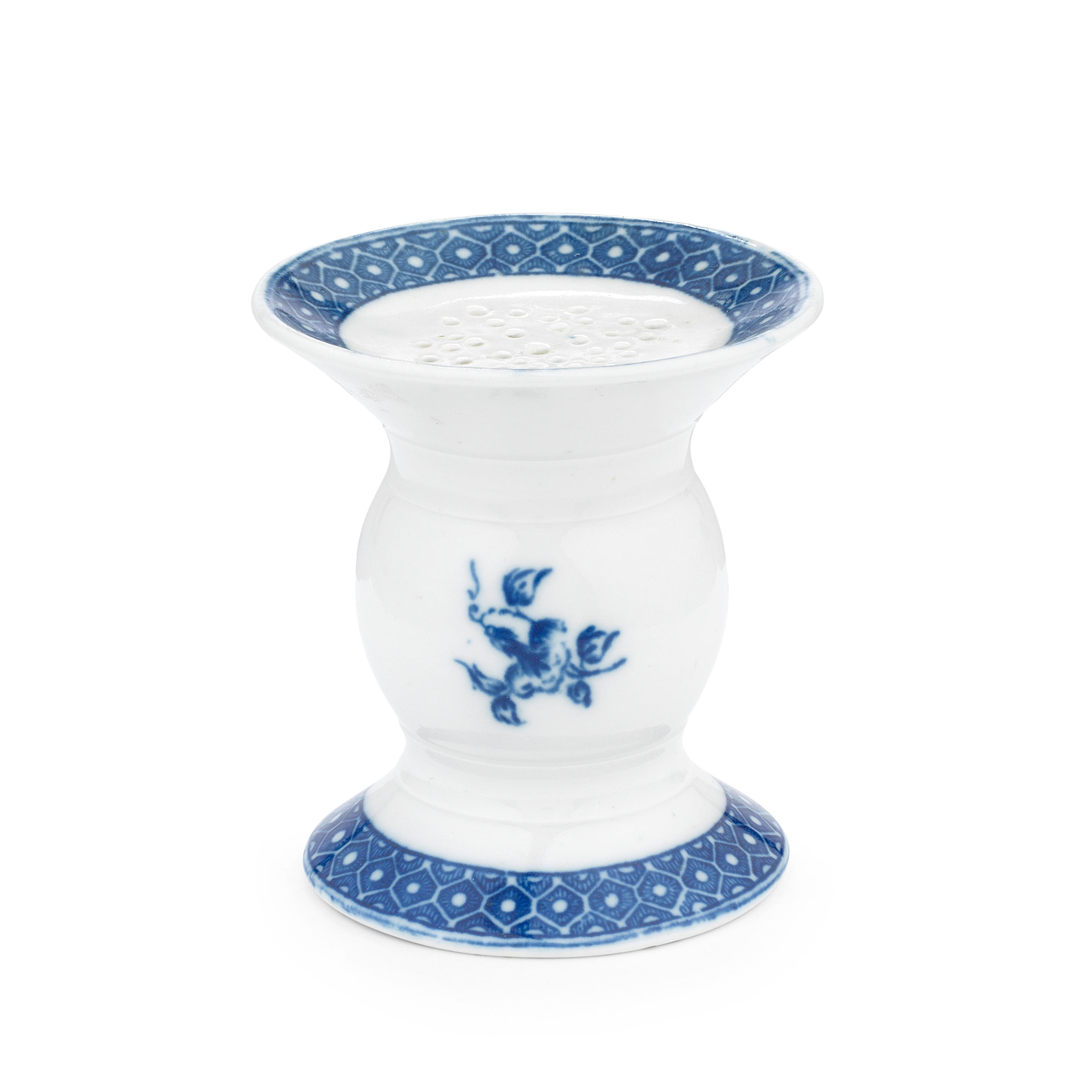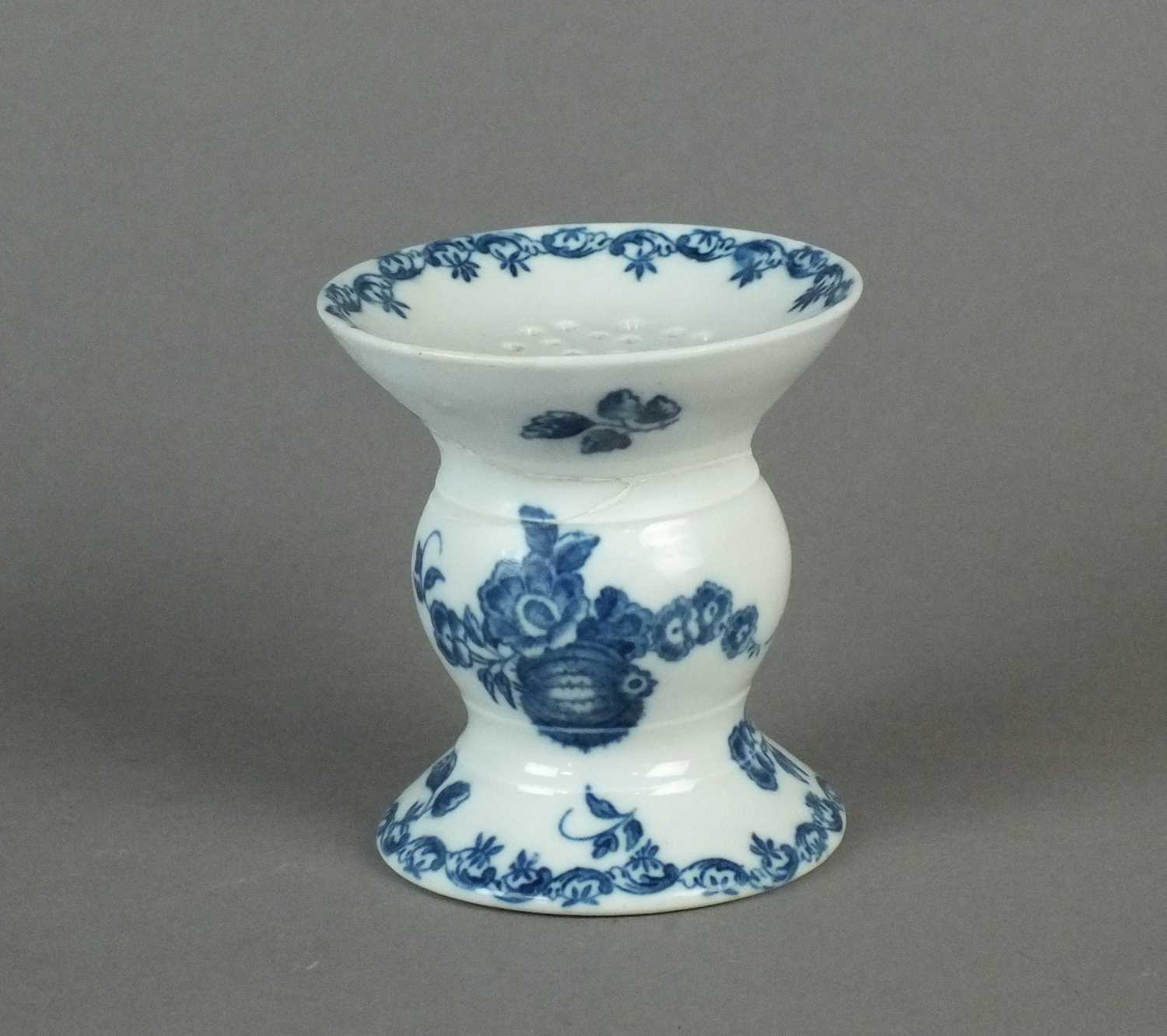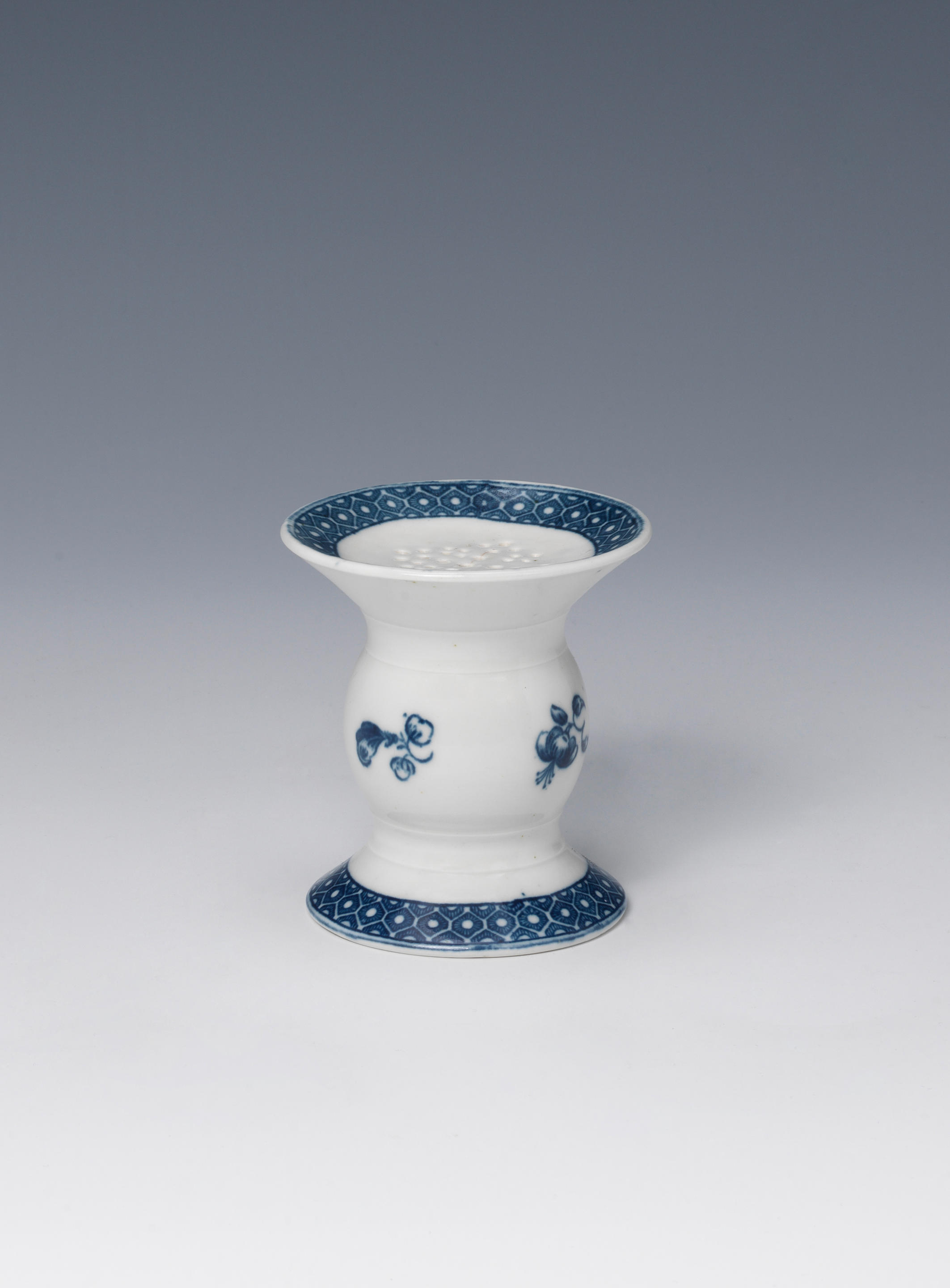A Caughley pounce pot transfer-printed with sprigs, circa 1776-85, C mark, 7.9cm high Provenance: Wright Collection no.205, purchased from G. Brown, Wem in 1980 - a house sale. The sellers are reported to have said, 'We don't know where the salt pot is!' Literature: Ironbridge 1999 no.45 and Caughley Society, Caughley Blue and White Patterns, p.214. 'Pounce' is a fine powder, made predominantly from cuttlefish bone that was used to dry ink and make rough surfaces suitable for writing on. After sprinkling the paper, 18th or 19th century ink would generally take around ten seconds to dry before the paper could safely be folded without the risk of blotting. The paper would be gently shaken to avoid excess sticking to the paper, which could then be safely discarded prior to this folding. Despite blotting paper being available since Tudor times, this method of using 'pounce' or sand proliferated well into the 19th century.
A Caughley pounce pot transfer-printed with sprigs, circa 1776-85, C mark, 7.9cm high Provenance: Wright Collection no.205, purchased from G. Brown, Wem in 1980 - a house sale. The sellers are reported to have said, 'We don't know where the salt pot is!' Literature: Ironbridge 1999 no.45 and Caughley Society, Caughley Blue and White Patterns, p.214. 'Pounce' is a fine powder, made predominantly from cuttlefish bone that was used to dry ink and make rough surfaces suitable for writing on. After sprinkling the paper, 18th or 19th century ink would generally take around ten seconds to dry before the paper could safely be folded without the risk of blotting. The paper would be gently shaken to avoid excess sticking to the paper, which could then be safely discarded prior to this folding. Despite blotting paper being available since Tudor times, this method of using 'pounce' or sand proliferated well into the 19th century.









Try LotSearch and its premium features for 7 days - without any costs!
Be notified automatically about new items in upcoming auctions.
Create an alert